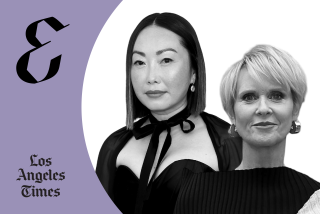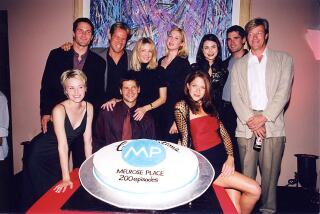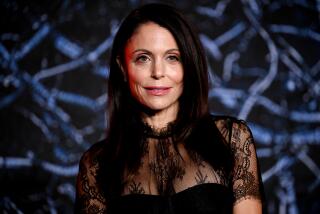Ad Agency Women Hit TV Stereotypes
People growing up in the â60s got a first look at the advertising business through the TV show âBewitched.â The message was loud and clear: Career advancement in advertising meant having a wife with magical powers. That was OK, unless you were the wife.
Judging from the current crop of TV shows, the rules have been rewritten for the grown-up boomers of the 1990s. Nerdy Darren Stevens types have been replaced (or downsized) with stop-at-nothing female characters who use sex and smarts to neutralize men.
Take Amanda (Heather Locklear) of âMelrose Place.â She slept with a colleague in a recent episode to secure her position as president of the fictitious D&D; Advertising. The tactic (of course) worked.
Meanwhile, on âGood Company,â a new show on CBS, Zoe (Wendie Malick) shares with a subordinate the secret of her fast rise at the agency of Blaton, Booker & Hayden Worldwide: a talent for being nasty.
These Type A female characters can be pretty scary, but it would be scarier still if these shows mirrored the advertising world. But it is probably safe to say that todayâs programs donât reflect the realities of the agency business any better than âBewitchedâ did in its day. (Still, having a clever spouse canât hurt.)
âMelrose Placeâ co-producer Frank South says the characters in the steamy Fox serial are way larger than life.
âThings happen in a tougher way [in the show] than in the real world,â he said.
Dan Stanley, co-creator of âGood Companyâ and a former Madison Avenue copywriter, says the despotic Zoe is a âcomposite of various peopleâ he has known in advertising. There is no special reason why the character is a woman, he said.
More testimony comes from women in the ad business. They say theyâve never encountered political players like Amanda or Zoe.
âThe shows are playing to a stereotype about advertising--that people in advertising will say and do anything to sell a product or land a client,â said Elaine Hollifield, a freelance art director from Santa Monica.
As in any profession, advertising has women who are very career-oriented, said Ilene Price, senior vice president of the Los Angeles agency Fattal & Collins. âBut these characters are exaggerated in the extreme.â
These woman say the shows project a big lie: That advertising is a womanâs world. The fact is that relatively few women have the position and income of an Amanda or Zoe.
According to a survey from Gumbinner/Haubenstock, a New York advertising recruitment firm, only 17% of advertising executives with salaries over $200,000 are women. Yet since 1982, the number of women entering the advertising business has increased by 45%, while overall employment in the industry has grown by 34%.
âMost of the women I know are overworked and underpaid, not like the women on TV,â said Lynn Eberhard, a Los Angeles sales representative for a company that produces billboard advertising.
So is there any truth at all to these shows? South, the âMelrose Placeâ co-producer, says conflicts in the series stem from the struggle to survive in a terribly competitive business. Things get ugly on the show because the characters âcare desperately about what they are doing. They want to survive. They have to fight to succeed and stay on top in the business world.â
Is there anyone in the age of downsizing who canât relate to that?
âThere is a germ of truthâ in the TV shows, says Prince of Fattal & Collins.
âTo get ahead, women have to play a manâs game,â she said. âI think women by nature try to work things out and care about what the people around them think. Men are about moving ahead and not caring what people think.â
Prince sees a double standard: Assertive women are attacked as shrews while aggressive men are praised as strong. But that may have less to do with advertising than attitudes in the general work force.
So what should a talented, ambitious woman do to get ahead in advertising? Female professionals offered some tips:
* Consider the business side of the industry. Prince made the shift from creating advertising to dealing with clients in part because her contributions were easier to measure. The value of creative work is subjective, she said. If you are bringing in new business, your worth is measured in dollars and cents.
* Consider going into business for yourself. Eberhard and Hollifield left the politics of agencies behind. Their success depends only on how they perform. But giving up the security of a steady paycheck isnât for everyone. Some women start their own agencies. The best known example is pioneer Mary Wells, who opened Wells Rich Greene in the 1960s with one client. Today it is one of the top 25 agencies.
* Persevere. At least seven women have senior-level posts on Madison Avenue. The highest-ranking woman is Ogilvy & Mather Chairwoman and Chief Executive Charlotte Beers. A key to getting ahead for some women is a willingness to switch agencies when opportunity knocks.
More to Read
The complete guide to home viewing
Get Screen Gab for everything about the TV shows and streaming movies everyoneâs talking about.
You may occasionally receive promotional content from the Los Angeles Times.






